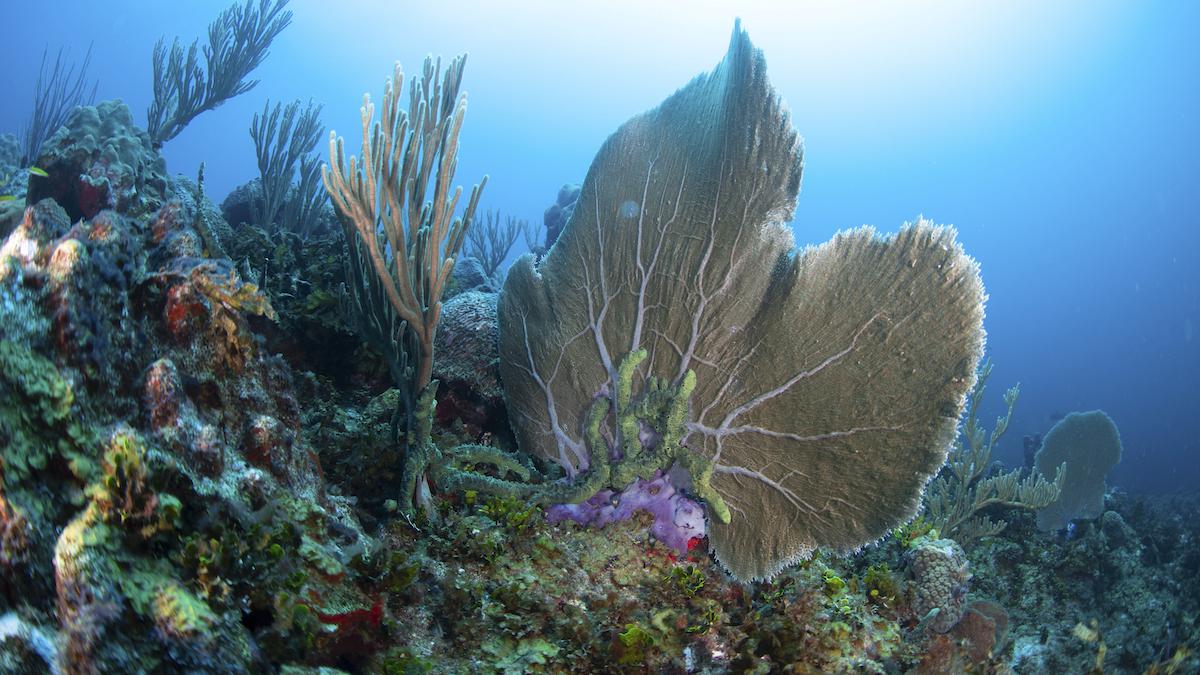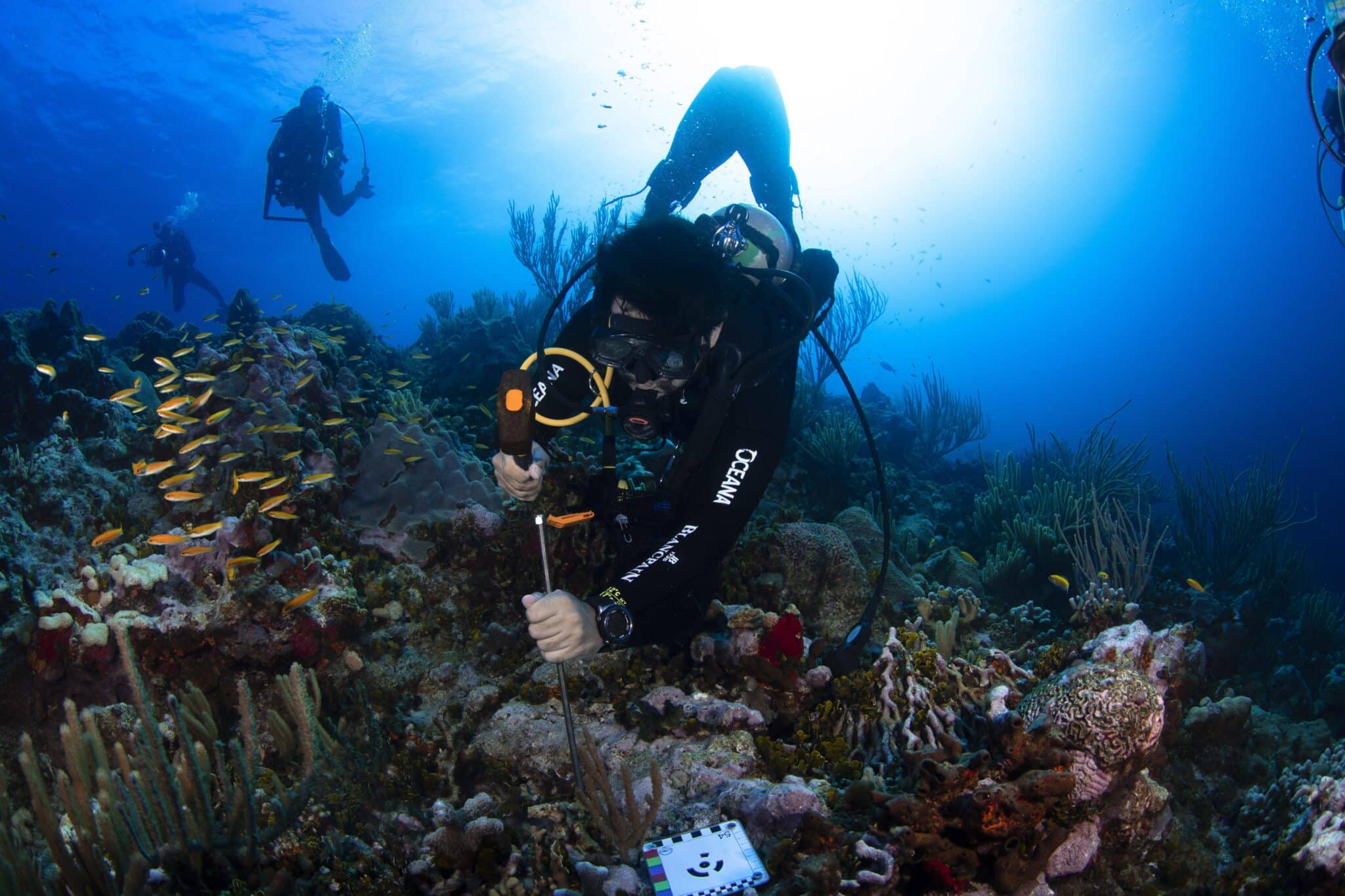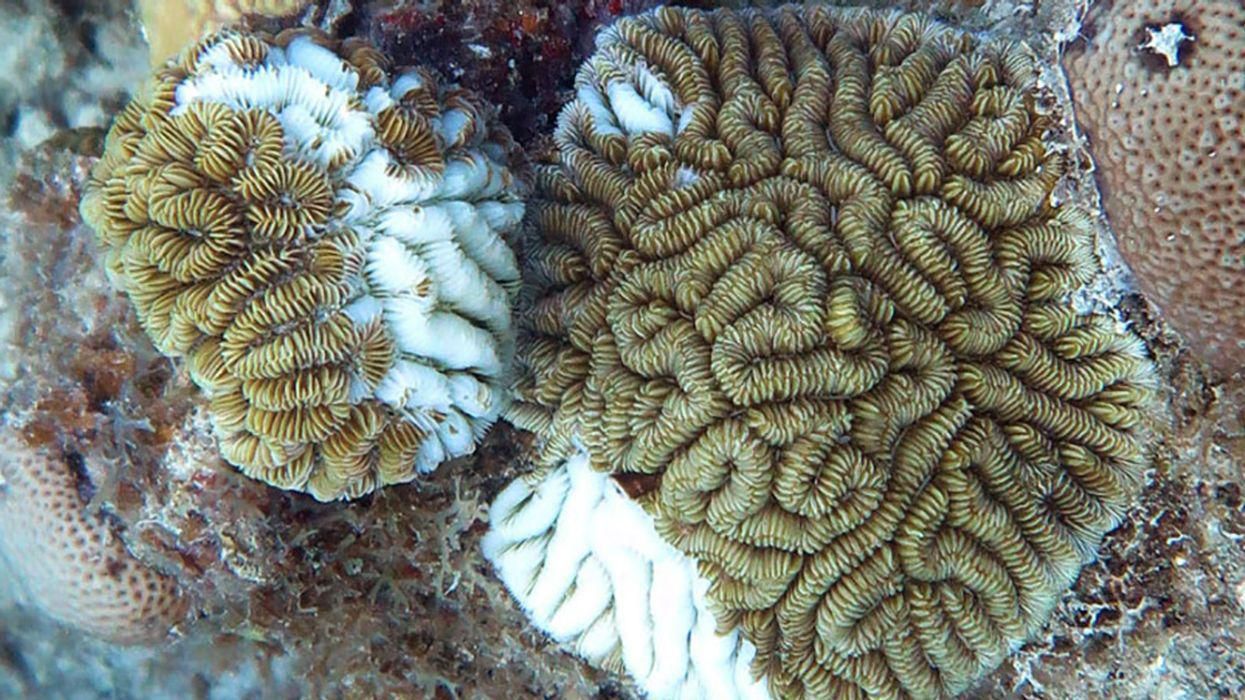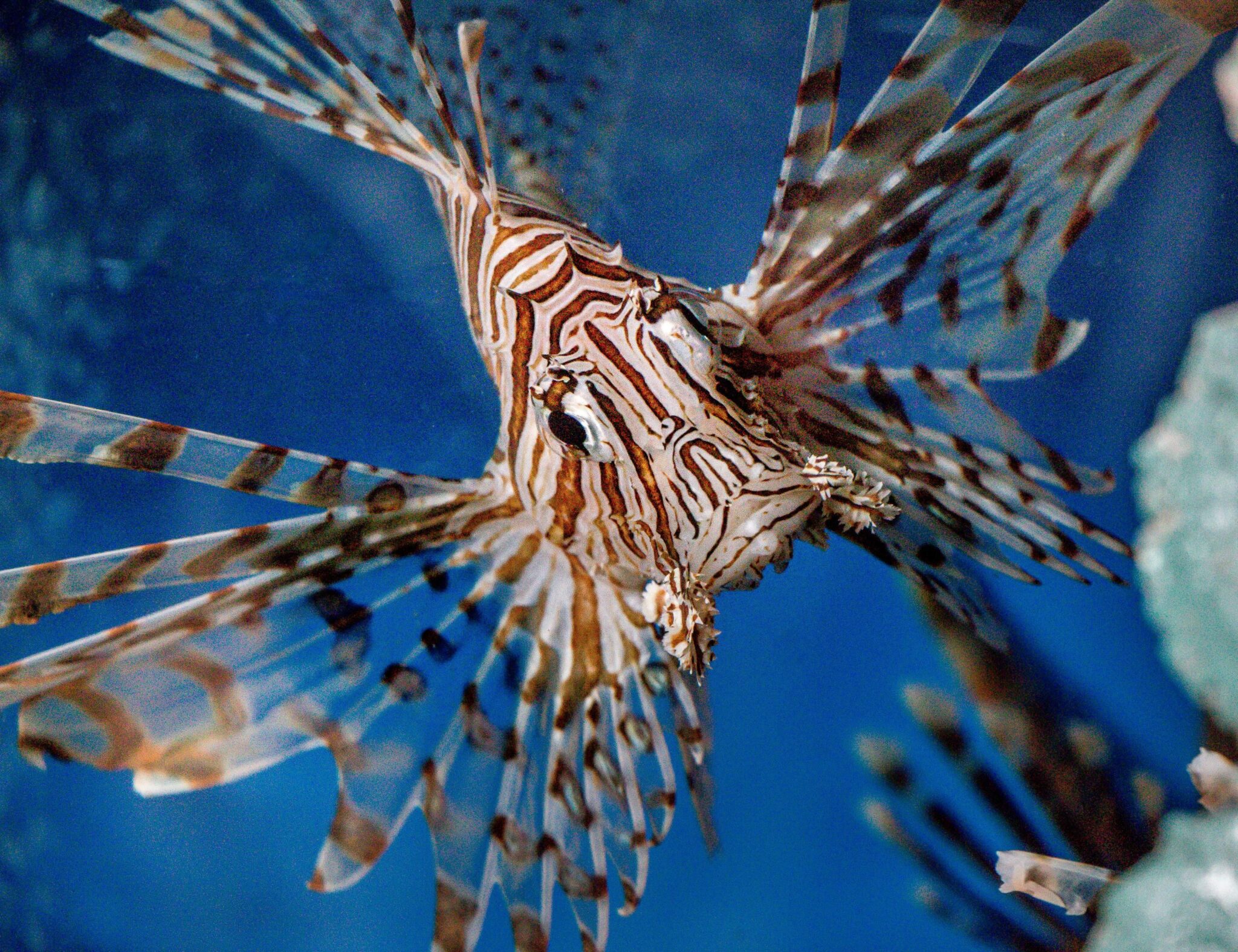
Oceana Mission to Mexico Uncovers Invasive Species and Coral Diseases on Pristine Reefs

In August, scientists from Oceana conducted the ocean conservation organization’s first-ever expedition to investigate and document the condition of two reefs in the Gulf of Mexico using cutting-edge technology. Assessing the data, they’re now reporting invasive species and deadly coral disease in Bajos del Norte, a pristine national park.
The mission, called Project Alacranes, focused on Scorpion Reef (Arrecife Alacranes in Spanish) and the Bajos del Norte National Park. These two areas contain some of the greatest biodiversity in the Gulf. Ten scientists with various specialties monitored corals, mollusks, crustaceans, echinoderms, invertebrates and fish. In Bajos del Norte, the team found the reef “mostly healthy” but noted “previously undocumented threats” including invasive lionfish and deadly coral disease.
Oceana’s team explored seven sites in the area, covering over 7,500 square feet. They captured 29,352 photographs, which will help create 3D maps of the reef bottom so the team can continue their analyses out of the water. This is the first time such technology and methods have been used in Mexico.
Oceana scientists take measurements and observations on a pristine reef in the Gulf of Mexico as part of Project Alacranes. Oceana
Because very little scientific research had been conducted in Bajos del Norte, the findings of this expedition are crucial and will help determine the area’s biological wealth. For future management policies and protective measures, the data will provide a strong baseline.
“We identified extraordinary seascapes, full of life, confirming the great value of this area,” said Mariana Reyna, Oceana’s expedition leader. “The presence of juvenile fish indicates that this reef is a vital place for the development of the species, that is, they need the conditions of this site to grow and migrate, or grow and fulfill their life cycle feeding other species.”
The scientists’ “first stage” results showed brain and flower corals dead or with “very advanced lesions,” aligning with potential Stony Coral Tissue Loss Disease. Other coral diseases were also present, including yellow bands and black spots, as well as various levels of coral bleaching.
Lesions (white) eat into the tissue of maze corals on Flat Cay reef, near St. Thomas in the U.S. Virgin Islands. The lesions are caused by Stony Coral Tissue Loss Disease. Marilyn Brandt
None of these unfortunate phenomena were observed on a previous visit to Bajos del Norte in 2019 by a different group. The extent and speed of the corals’ deterioration in the interim time is alarming, the scientists said.
The expedition team also recorded the presence of lionfish at almost every reef site visited.
“Lionfish are voracious predators and opportunistic,” said Allie Candelmo, a lionfish expert with REEF Environmental Education Foundation who did not participate in the study, reported the Keys Weekly. “They consume a lot of prey throughout the day and evening, which has led to dramatic declines in biodiversity and abundance of native populations when left unchecked.”
On a remote reef in the Gulf of Mexico, Oceana scientists found invasive lionfish. Ray Harrington / Unsplash
Lionfish are an invasive species that feeds on small benthic fish and invertebrates. They have an insatiable, indiscriminate appetite. In short amounts of time, the predators can clear out all the local life from reef heads, throwing those mini-ecosystems out of balance, Candelmo said. The expert also noted that, as an invasive species, lionfish have spread so quickly because they have few natural predators, enjoy a high thermal and depth tolerance and breed very quickly.
“You can find them anywhere from 1 meter to 300 meters in-depth,” said Candelmo. Everywhere in that range, they’re busy eating and reproducing.
Despite their two alarming findings, the Oceana scientists noted that the reef community was “largely in good condition” and that there was no evidence of overfishing. The scientists also warned, however, that as scarcity increases in already exploited fishing areas, fishers will be forced to venture further from shore where existing monitoring efforts are limited.
Globally, overfishing occurs often as illegal, unreported and unregulated (IUU) fishing. IUU fishing remains one of the primary threats to the health of the seas. An unrelated study recently found that such fishing efforts nearby to marine protected areas even reduced their efficacy.
Nevertheless, Oceana’s scientists maintained that there is still the chance to protect this area, they said, advocating for legal protections for the area.
“We managed to do science that has never been done in this area. Bajos del Norte was little explored until we arrived,” said Miguel Rivas, director of habitat campaigns at Oceana. “Science allows us to identify where to focus our efforts to preserve this wealth. We should not wait until the damage is done and the area is too devastated to act. Our oceans need us to make the changes that are required to protect them today.”

 233k
233k  41k
41k  Subscribe
Subscribe 


